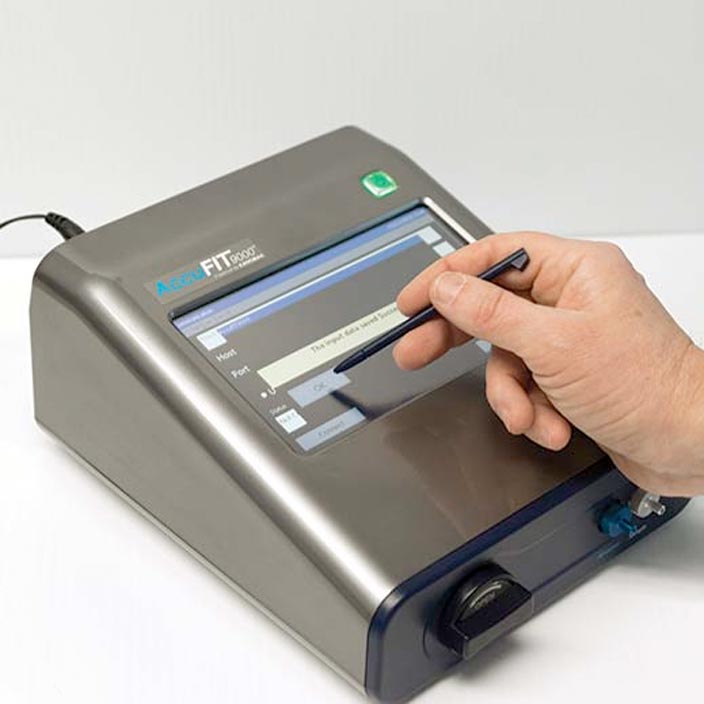Does Your Face Fit?
What is Face fit testing and why is it so important?
What is face fit or respiratory mask fit testing?
Face fit testing is an important range of tests undertaken to ensure that tight-fitting respirators fit the user correctly. It ensures the respirator mask is working properly to provide the highest level of protection to the wearer.
Respiratory masks are used in environments where there is a danger of inhalation of hazardous particles, gas or vapour, these include first responder and healthcare respirator users. There are several different types of mask, including disposables, filtering facepieces, reusable respirators with cartridges and filters, and tight-fitting facepieces that are used with powered or supplied air systems.

What is measured in a face fit test?
Face fit tests are generally conducted for two reasons.
- To ensure the user can put the mask on correctly, as per the manufacturer’s guidelines.
- To guarantee that the seal on the face is adequate and the respirator suits the user.
There are two types of face fit tests, qualitative and quantitative.
Qualitative fit tests (QLFT) rely on human senses, smell, taste or irritation to detect an issue, this method is therefore more open to individual interpretation and deemed not as accurate as quantitative. Quantitative fit testing (QNFT) generates a numerical assessment of respirator fit based on data. The tests include ambient aerosol condensation nuclei counter and controlled negative pressure (CNP) assessments. There is a third test, using generated aerosol method, but this is mainly used in specific applications, like laboratory environments and not common practice for respirator users.
Both QLFT and QNFT methods use the following test exercises, where those under test perform one minute of each:
- Normal breathing
- Deep breathing
- Turning head side to side
- Moving head up and down
- Talking
- Bending over (or jogging)
During a quantitative test, participants are also asked to grimace to ensure all facial expressions are checked.

How often should face fit testing be carried out?
It’s recommended that respirator fit testing should be carried out as outlined by the respiratory mask manufacturer, this is often annually. However, it is also recommended that face fit testing should be re-carried out if new masks or upgraded versions are introduced.
Also, don’t forget if a person’s face changes significantly between face fit tests then they will need to undergo the test again. This could include dramatic weight loss, significant dental work, or new facial scarring where the seal is situated.
What regulations and guidance do you have to be compliant with?
The Work Health Safety Act (WHS) does not directly call for facial fit testing to be delivered but the Regulation and Guidance material does. More importantly, it should be carried out due to the severe health implications inflicted, if respiratory equipment is not fitted correctly and performing adequately. The following regulations outline when fit testing should be carried out.
-
WHS Regulation 2011
Section 44 (3) (a) (ii) states that PPE provided must be a suitable size and fit, and reasonably comfortable for the worker who is to use or wear it. One way to ensure that it is a suitable size and fit is to conduct a quantitative face fit test.
-
Codes of Practice
In ‘How to Safely Remove Asbestos Code of Practice 2011’ it recommends that a fit test be conducted. This fit test is to be conducted in accordance with AS/NZS 1715:2009 Selection, Use and Maintenance of Respiratory Protective Devices.
In the ‘Foundry Code of Practice 2004’ it states that PPE must be a suitable size and fit for workers who are going to use it.
The ‘Silica – Technical guide to managing exposure in the workplace’ states that workers wearing masks must be fit tested.
-
Australian Standards
In AS/NZS 1715 it specifies that users of any tight-fitting respirators are to be fit tested prior to starting work and then at least annually after this. It states if there is a change in the wearer’s facial characteristics then a fit test must be conducted again.
A growing amount of companies in industry are taking up fit testing, especially in sectors dealing with silica, asbestos removal, mining and construction, as awareness of the dangers of inhaling particulates associated with this work increases.
We know more about the long-term effects of breathing hazardous particles than ever before so it’s important that those exposed to these environments are protected correctly.
If you need more information about face fit testing, or would like to speak to us about our NEW respirator fit test solution, please just get in touch.